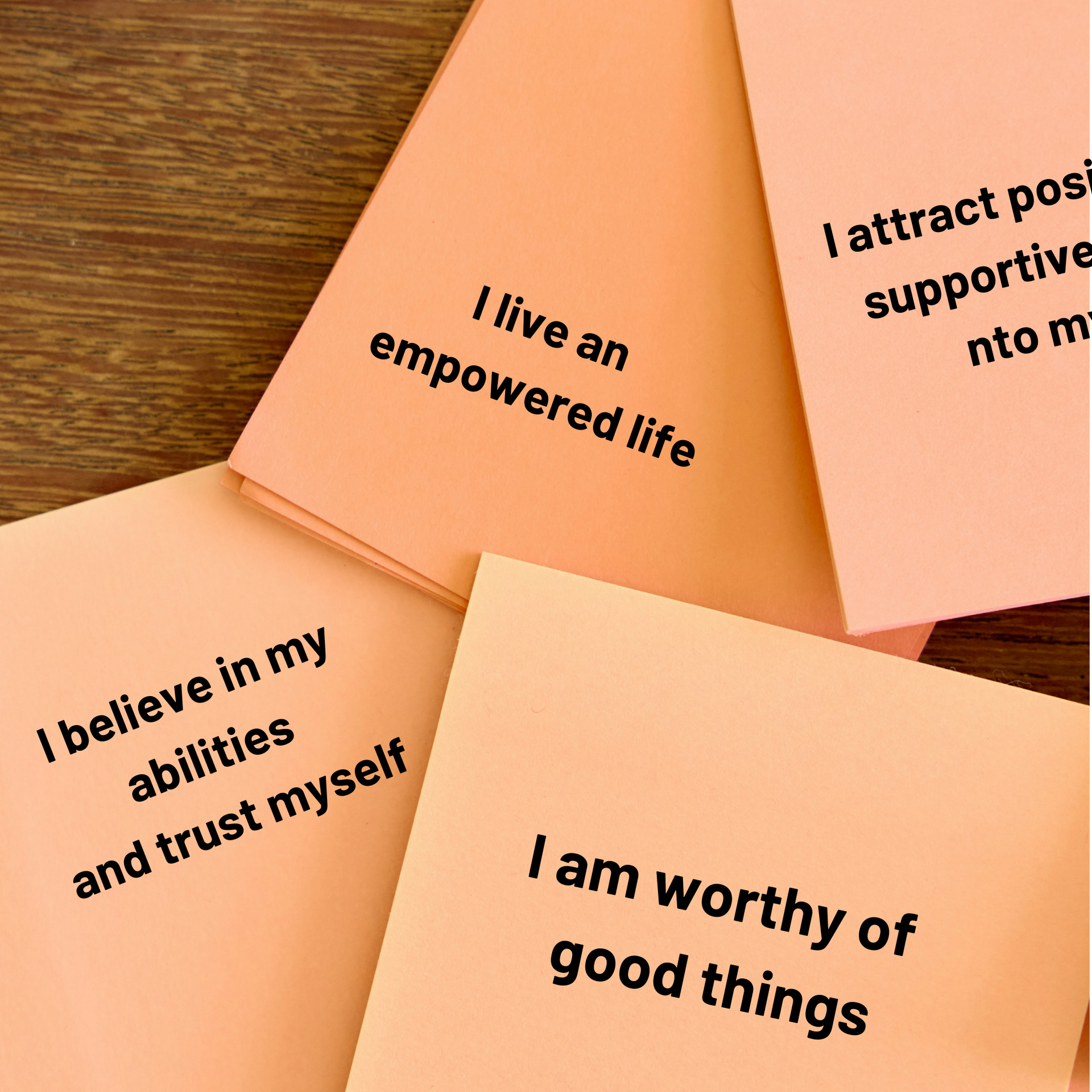
I’ve been grappling with self-esteem issues this past couple of months, but I only realized it when I caught myself emotionally eating. The comfort of a chocolate bar and the quick boost from a sugary muffin helped me feel good. My “aha” came when I woke up in the middle of the night and realized when it all started.
It began in May when I was involved with an organization that clashed with my values. Sticking with it only highlighted our differences. Then came a stressful four-month project with a verbally abusive co-worker.
At the same time, I was launching my first children’s book and a relationship that I thought was a strong friendship ended abruptly. With everything piling up, I neglected self-care—poor eating, skipped walks, and avoided exercise. I knew I needed to take care of myself, but I fell back into old habits. Thankfully, my journey of self-awareness helped me reflect on these patterns.
I also noticed my thoughts turning negative: “I must not be good enough for this job if they’re treating me like this,” and “I can’t be a nice person if people stop responding to me.” My negative self-talk led me to the start of a downward spiral.
In the past, this would have crushed me. I would’ve wondered, “What am I doing wrong?” Believing I was the problem and needed to change. But now, I understand how people treat me reflects their insecurities, not mine. I focus on what their behaviour says about them, not just about me.
Many parents, like yourself, might struggle to break free from the patterns you learned growing up.
Helping you break free from these patterns is why I focus so much on self-esteem—it's essential for your personal growth and well-being so you can inspire your children and others.
So, let’s explore what self-esteem means and ways to improve it so you can break old habits.

Self-esteem Meaning
Self-esteem is how we think of and value ourselves. This internal gauge measures our confidence in our abilities, decisions, and overall worth. Healthy self-esteem helps us face challenges with a positive attitude, recover from difficulties, and build resilience.
A person with good self-esteem engages in positive, constructive self-talk. They are generally kind and supportive toward themselves, even when facing challenges. For example, they might think, "I did my best, and that’s what matters," or "I can handle this situation, and if I make a mistake, I’ll learn from it." They acknowledge their strengths and accept their imperfections without letting them define their worth. Their internal dialogue helps them stay resilient, confident, and motivated, even in tough times. They view setbacks as opportunities for growth, not as reflections of their value.
Self-worth is different from self-esteem. Regardless of achievements or external validation, it is the underlying sense of value. It's the deep-rooted belief that we are valuable simply because we exist.
Our self-worth isn't tied to our performance, appearance, or the approval of others but stems from our inherent qualities as individuals.

Low self-esteem
Someone with low self-esteem has a poor or negative view of themselves, often accompanied by inadequacy, self-doubt, and a lack of confidence. They may constantly criticize themselves, believe they are unworthy of love or respect, or feel like they’re never good enough. Low self-esteem can lead to difficulties in personal relationships, work, and daily decision-making. It creates a negative internal dialogue that can become a self-fulfilling cycle, where individuals struggle to recognize their strengths and often dwell on perceived failures.
The causes of low self-esteem can vary widely but are often rooted in early life experiences. Criticism from parents, teachers, peers, bullying, or growing up in an environment where love and validation were conditional can significantly impact a person’s self-worth.
Comparisons to others, societal pressures, and unrealistic expectations—whether from the media or personal relationships—also play a role.
Negative experiences, such as rejection or constant failure, can reinforce the belief that one isn’t good enough, solidifying low self-esteem over time. Understanding the sources of low self-esteem is critical to addressing it and beginning the journey toward healthier self-worth.
Someone with low self-esteem tends to have negative, critical self-talk. They might frequently think, "I’m not good enough," "I always mess up," or "People don’t like me." These thoughts often focus on their perceived failures or shortcomings, and they may magnify mistakes while dismissing successes. A person with low self-esteem may also feel unworthy of praise or assume that others see them in the same negative light.
Self-awareness becomes essential in this cycle of negative self-talk and avoidance. By recognizing these harmful patterns, you can begin to understand their impact and take the first step toward changing them. Let's explore how self-awareness is crucial in breaking free from low self-esteem.

Self-Awareness
Self-awareness was critical in understanding and improving my self-esteem, especially when navigating the challenges I faced. Self-awareness is the skill of noticing your thoughts, emotions, and actions and understanding how they influence your overall well-being. Self-awareness allowed me to catch myself when I fell into unhealthy patterns, like emotional eating or neglecting my physical health.
Self-awareness was the turning point that broke the cycle of stress and poor decisions. It allowed me to identify where things went off track and why I might have responded the way I did. With self-awareness, I understood my triggers, avoided self-blame, and took proactive steps to set boundaries, practice self-care, and rebuild my self-esteem. It’s a powerful tool that helped me move from feeling stuck to taking back control of my life.
With self-awareness as the foundation, the next step is learning to actively improve one's self-esteem and break free from negative patterns. Here are some practical strategies I used to rebuild my self-esteem, which I call getting my mojo back.

9 Helpful Ways to Build Confidence and Self-esteem
- Practice self-compassion: I treated myself with the kindness I would offer a friend. I acknowledged my feelings without judgment and reminded myself that it's okay to make mistakes.
- Challenge negative self-talk: I replaced critical thoughts with more positive, realistic ones. For example, instead of "I can't do this," I said, "I’m learning, and I’ll get better with practice."
- Set small, achievable goals: I set small tasks to rebuild my confidence. For this four-month project, I had to learn new software and meet the demands of being on call ten hours daily to answer questions. The software was to produce better reports, which was entering data. The information I received was overwhelming. To manage this, I broke the data entry into manageable steps and celebrated each success by doing my happy dance.
- Focus on strengths: I regularly reminded myself of what I do well rather than dwelling on my weaknesses. This project was the third time this company had hired me to do the same work, meaning I must do something right.
5. Surround yourself with positive influences: I spend more time with people who uplift and support me and distance myself from those who bring me down or contribute to self-doubt.
We often hear this about the people we surround ourselves with and distancing ourselves from toxic people. I experienced this firsthand with one of my grandchildren. They are at an age where apparently they know more than their parents. I am proud of my daughter for handling the situation because witnessing the turn-around is fantastic.
My grandchild I am talking about wouldn’t converse with me, looked unhappy, and was miserable because a family member constantly put them down. These put-downs and badgering caused my grandchild to turn to friends who validated their thoughts that they were unworthy.
After many tears and conversations with her mother and my grandchild, my grandchild decided to limit her time with this family member. Shortly after, my grandchild started hanging out with different friends who spent less time on their phones and instead engaged in physical activity, having fun, and laughing.
The difference is like night and day, proving that the people we surround ourselves with greatly influence how we think about ourselves. My heart was filled the other night when my grandchild talked most of the night during a family birthday dinner and ended the night asking me if we could make a Gramma Grandchild's trip to Europe.

6. Take care of your physical health: I stopped walking, eating healthy, and exercising—all the things I knew and needed to manage stress and boost my self-esteem. Because I was neglecting my physical health, this led to poor sleep, which drained my mood and energy. Low energy caused me to make poor food choices, and the shame I felt for eating that way fuelled the cycle. I had to break this vicious cycle.
Because I had made it a habit to eat healthy, walk, and exercise, it wasn’t hard to return to those things—in other words, to my values.
7. Learn to say no: To return to my values, I needed to set boundaries to protect my time, energy, and emotional well-being, preventing burnout and resentment. For instance, I recommitted to my workout sessions with my trainer and informed my co-worker that I couldn’t chat between 8:30 and 9:30 a.m. Prioritizing my workouts and self-care was a turning point. It helped me eliminate sugar and comfort food, shifting the cycle from downward to upward.
I also spoke with this co-worker about the way they talked to me. This one time, when they started, I kindly and calmly told them that if they didn’t stop talking to me, that way I would hang up the phone. On one occasion, my direct supervisor also heard the abuse and spoke to his supervisor about the situation. The co-worker got the message because soon after, they began to talk, respectively, to me.

8. Engage in activities you enjoy: Doing things that make you happy or bring you fulfillment helps reinforce a sense of purpose and joy, boosting your confidence. I am a firm believer in this. I discovered that when I did something that brought me joy first thing in the morning, I was happier and willing to give to others because I had given to myself first.
My happy place is out on the water, riding my Sea-Doo. My husband and I would hop on for a ride whenever the weather allowed. Surrounded by nature—the rocks, the trees, the open sky—my spirit felt renewed. In those moments, nothing could bring me down.
9. Take risks and embrace failure: Step out of your comfort zone, knowing mistakes are part of learning. Each challenge you take on builds resilience and helps you grow stronger.
Taking on this project while releasing my first children’s book felt overwhelming. I took on the project to fund my children's book series, as writing a children’s book means covering costs upfront, including paying for a fantastic illustrator. I knew I could manage both. I had thoroughly planned and organized for the book release, and I was familiar with the project since it was my third time doing it. However, I still had to learn new software and figure out the best way to launch my book. I didn’t want to miss the opportunity or have regrets about not taking risks, even if I made mistakes along the way. As Helen Keller says, “Life is either a daring adventure or nothing at all.”
Just as you work to build your self-esteem, you play a crucial role in shaping your children's self-esteem. Children's confidence often mirrors the behaviours and attitudes they observe in the adults around them. While parents may have the tools to reflect on and rebuild their self-esteem, children are just beginning to form these concepts, making your guidance essential.

Building Self-esteem in Children
Building self-esteem in your children is foundational to their emotional and mental well-being. It starts with helping them understand their worth, recognize their strengths, and encourage a positive self-image. Unlike adults, children still form their identity and often look to parents, teachers, and peers for validation.
In my children's book, Finding Lily’s Inner Magic: A Tale of Building Confidence, Gramma Kate helps Lily realize that her value doesn’t depend on what others think of her. Lily taps into her inner strength with her gramma's guidance and recognizes that her self-worth comes from within, not external approval.
While building self-esteem in children and parents has similarities, such as encouraging self-compassion and setting boundaries, children rely more on external reinforcement to shape their beliefs about themselves. For your children, fostering self-esteem is about laying a solid foundation early on.
In Finding Lily’s Inner Magic, the story emphasizes how important it is to equip children with the tools to build confidence from a young age to carry those lessons into adulthood. When you read the book with your child, you can guide them in shaping their self-esteem and reinforcing yours.
As children work on building their self-esteem, positive affirmations can make a big difference. Just like Gramma Kate did for Lily, offering encouraging words helps children recognize their inner strength and develop a strong sense of self. Positive affirmations are an easy but strong way to support kids in feeling confident and capable.
Positive Affirmations for Kids
Teaching positive affirmations to kids is a great way to help them develop a healthy self-image and boost their confidence. An affirmation is a simple, positive statement reinforcing a belief or goal. These statements encourage your children to focus on their strengths and cultivate a mindset of self-love and resilience. For example, affirming “I am strong and capable” can help a child feel empowered, especially when facing challenges.
To create affirmations with kids, start by identifying areas where they need encouragement. Then, work together to craft short, positive statements that resonate with them.
To help guide you, here are some common areas where your child might need a boost in confidence, followed by the steps to create affirmations.
Areas Where Kids Might Need Encouragement:
- Confidence in learning: "I am a great problem-solver" or "I can learn anything with practice."
- Friendship and social skills: "I am a kind and caring friend" or "I can make new friends."
- Handling emotions: "I can stay calm when I'm upset" or "I can handle my feelings."
- Overcoming challenges: "I am brave when things get tough" or "I don't give up easily."
- Self-worth: "I am enough just as I am" or "I believe in myself."
- Creativity: "I have great ideas" or "My imagination is amazing."
- Physical abilities: "I am strong and capable" or "I can do hard things."
- Positive self-talk: "I speak kindly to myself" or "I am proud of who I am."

5 Steps to Create an Affirmation:
- Begin with "I am" to make the affirmation personal and impactful.
- Use present tense: Phrase it as if the desired outcome is already happening.
- Include motivating words: Choose powerful adjectives or verbs to energize the affirmation.
- Be positive and specific: Focus on what you want to achieve with clear, optimistic language.
- Keep it brief: Make sure the affirmation is concise and easy to remember.
The key is consistency. Encourage your kids to repeat these affirmations daily, aloud or quietly, to help these positive messages sink in. Including them in your kid's morning or bedtime routines is a great time to repeat affirmations, especially having them look at themselves in the mirror.
Positive affirmations aren't just beneficial for children. They are equally powerful for adults. As I did, we often face stress and self-doubt, and using affirmations helped me shift my mindset, reinforce my self-worth, and rebuild my confidence. Just like children, we need those reminders to focus on our strengths and cultivate a positive outlook.
Conclusion
Navigating setbacks and rediscovering my self-worth has been a challenging yet transformative journey. We all encounter setbacks as part of life, but the key is not to remain down or stuck. Instead, it's about rising again with renewed strength, like a phoenix emerging from the ashes, ready to embrace the future with a renewed spirit.
From emotional eating during stressful times to overcoming negative self-talk, I learned the value of self-awareness and proactive self-care. Through this process, I rebuilt my self-esteem through self-compassion, positive affirmations, and surrounding myself with supportive influences.
In Finding Lily’s Inner Magic: A Tale of Building Confidence, Lily discovers that her value comes from within, not external validation. Just as I worked through my struggles and grew stronger, Lily’s story offers valuable lessons on nurturing self-esteem in children. By embracing positive affirmations and fostering a healthy self-image, we empower ourselves and our children to face life's challenges with confidence and resilience.
If you need more guidance on creating positive affirmations with your child, download my
FREE worksheet now!
It’s filled with helpful tips and easy steps to start, making the process fun and effective for building confidence.

Remember, change begins with ourselves.
Put your knowledge into action and reach your full potential
Wishing you heartfelt warmth
and support on your parenting journey!
Cathy
Wish Setting Boundaries Was Easier?
Grab your FREE 7-day guide and create boundaries that bring you peace and balance!
